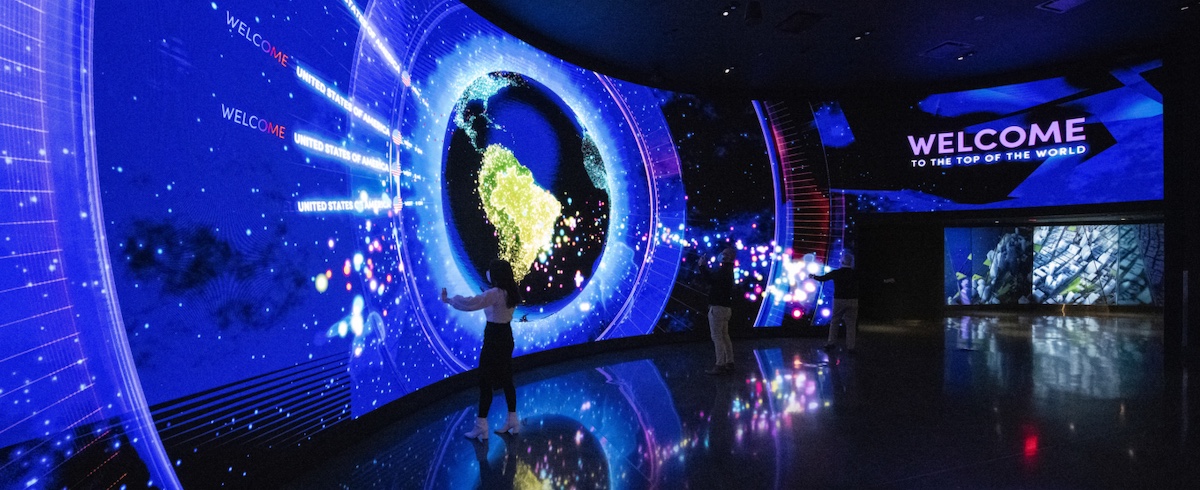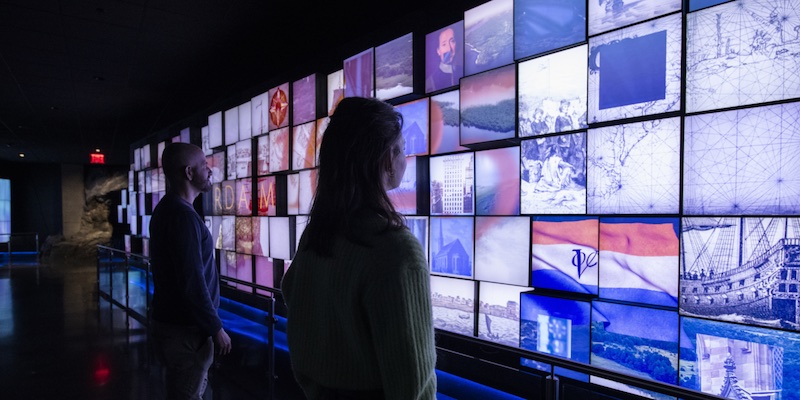
One World Trade Center Adds Giant LED Welcome Wall, 140-Screen Video Mosaic
September 2, 2021 by Dave Haynes
This is a new exhibit that welcomes visitors to the observatory attraction at the top of One World Trade Center in lower Manhattan, on the site of the twin towers brought down almost 20 years ago on 9/11.
Developed and delivered by Montreal creative and tech shop Float4, there is a set of video displays intended to tell the story of New York – past, present and future.
The Global Welcome Center is a huge interactive and data-driven visual LED wall that cleverly uses a live data feed from the ticketing system to greet each visitor, in their language of origin.
A Welcome Wall “displays and celebrates the starting points for each visitor’s journey and is customizable for VIP’s or special events.”
A projection-based “Reflection Screen gives visitors a bird’s eye view of One World Trade Center.”
And the Horizon Grid is a mosaic of some 140 LCD displays that presents a brief history of Lower Manhattan, using animations
There’s also a Portal Wall that presents a contemporary view of the Trade Center plaza and factors in future development plans.
The content is driven by Float4’s own RealMotion video server/playout engine.
Float4 always does nice work, but this one is particularly interesting for how it was pulled off. Travel between Canada and the U.S. has been greatly restricted for the last 18 months or so (Canadians still can’t, at least technically, travel into the U.S. unless it is classified as essential), so this was mostly planned and executed remotely.
“This project started at the onset of the pandemic and we had to adjust our creative approach swiftly. Doing creative reviews entirely in telepresence was a significant challenge. That’s why VR and game engines became immensely useful to perform the pre-visualizations we would have otherwise done in person,” Float4 founder and CEO Alexandre Simionescu told Inpark Magazine. “With team members in multiple locations across Canada and the United States, we had to engineer a workflow that allowed collaboration on the terabyte-sized pieces of content.”




Leave a comment